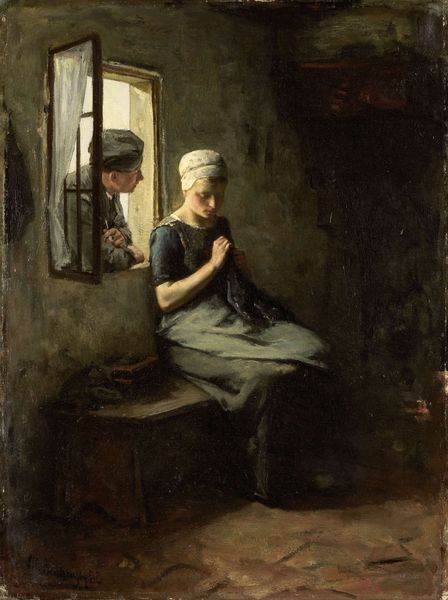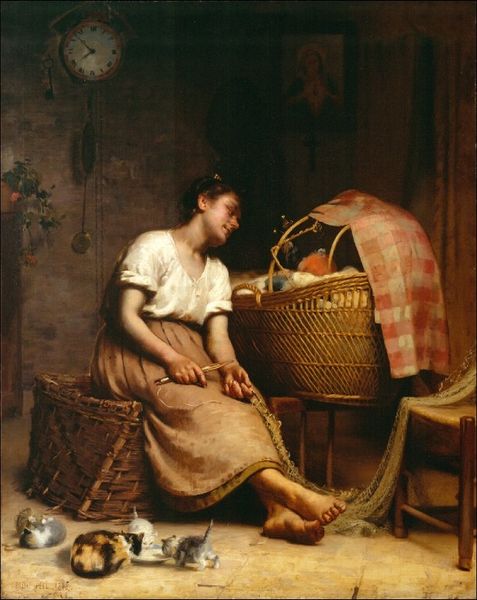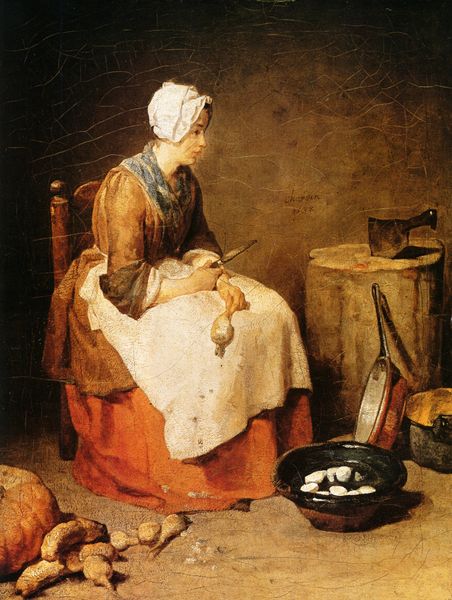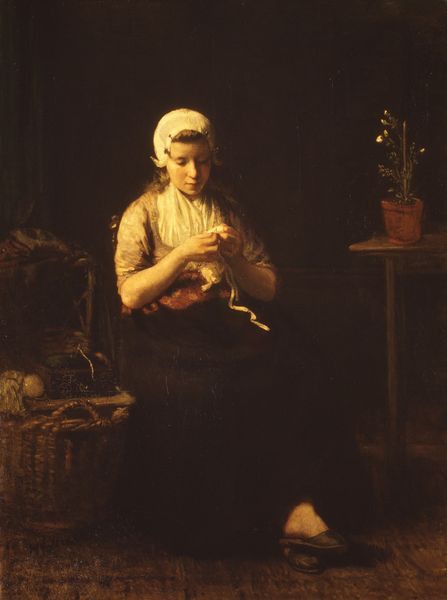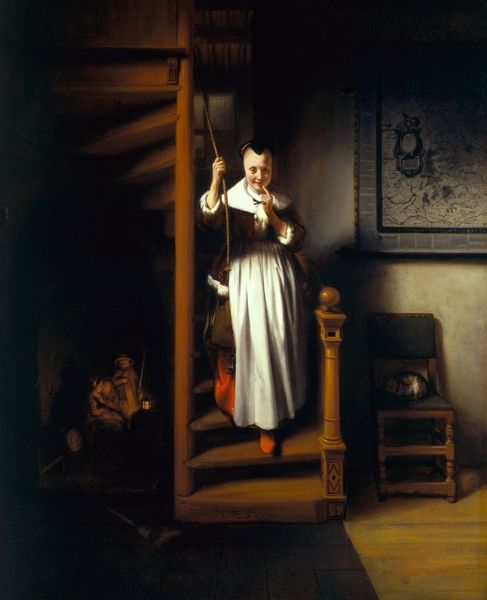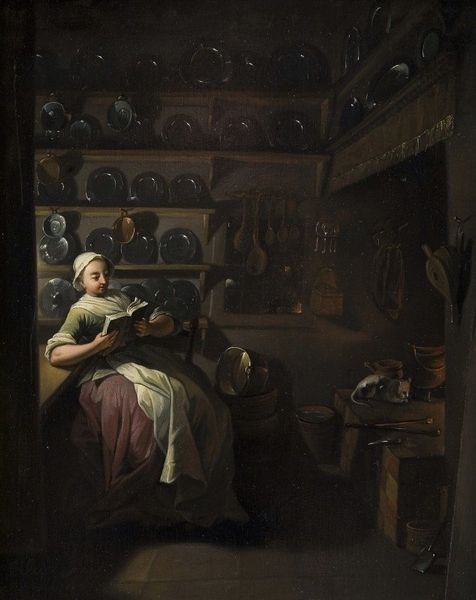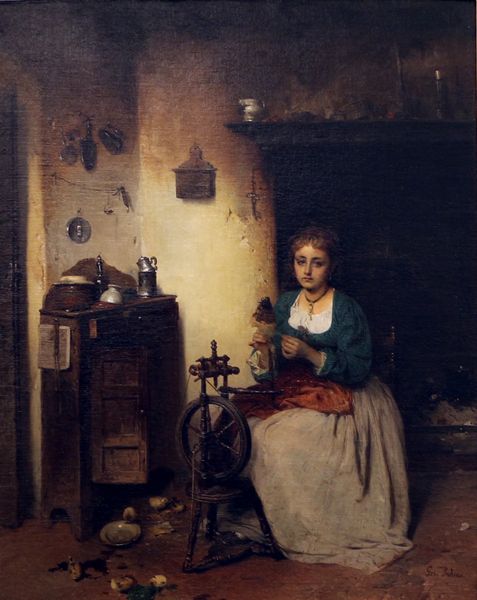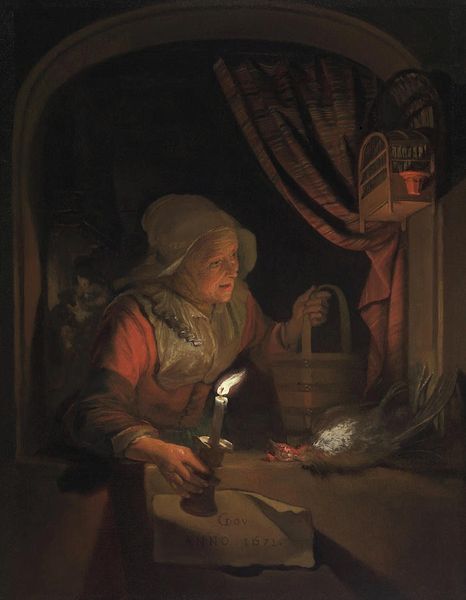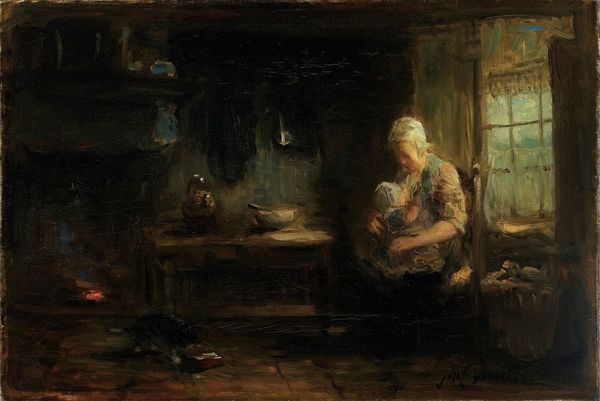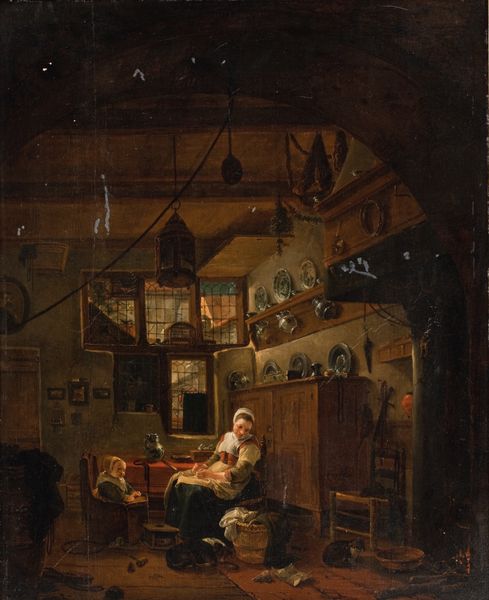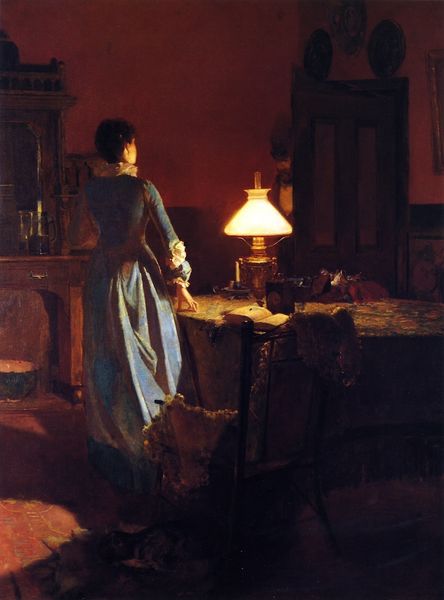
painting, oil-paint
#
portrait
#
baroque
#
painting
#
oil-paint
#
chiaroscuro
#
genre-painting
#
history-painting
#
realism
Copyright: Public domain
Giuseppe Maria Crespi was born in 1665. He grew to become one of the most celebrated artists of the Bolognese School, helping to put the city of Bologna on the map for its artistic contributions. Bologna even rivalled Rome and Florence as a cultural hub during the sixteenth and seventeenth centuries. In ‘The Kitchenmaid’ (1725), Crespi depicts a woman standing with her back to the viewer. She scrubs dishes in a sink, seeming completely absorbed in her chore. She is dressed in a practical apron and head covering. Based on the sheer amount of crockery stacked on the shelves above the sink, it becomes obvious that the woman has been employed by a large (and probably fairly wealthy) family. ‘The Kitchenmaid’ is a great example of genre painting. This is a type of art which takes its subjects from scenes found in everyday life. Genre painting first gained traction in the Netherlands in the early seventeenth century, and quickly flourished across Europe. It marked a significant break from the grand and idealised subjects of past art. Crespi often painted common narratives such as this. He preferred to represent working-class occupations rather than focus on portraits of wealthy patrons. What do you think this painting can tell us about life for the average person in 1720s Bologna? For me, it’s interesting that Crespi chose to represent the woman from behind. We don’t see her face, and there are no clues about who she might be specifically. This leaves her identity unknown – she almost comes to symbolise working women as a whole. Here, the domestic interior is painted in muddy colours. The painting is dominated by browns and muddy beiges. Light enters from the upper left corner, gently illuminating the scene while casting sharp shadows. This is a key feature of the Baroque movement, known as ‘chiaroscuro’.
Comments
No comments
Be the first to comment and join the conversation on the ultimate creative platform.
